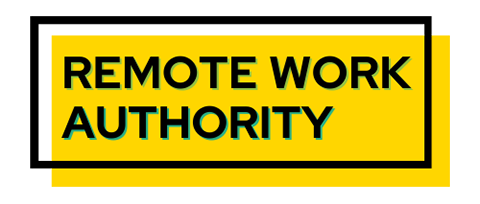During the pandemic and continuing to the present day, remote workers chose to move to other areas, often outside their home state. They were influenced by prices, amenities, and tax policies in their new locations as they sought the best states for remote work.
When people had the option to work remotely in 2020, many set up home offices in their residences. Others considered the possibility that the world might be their office and went abroad as a digital nomad or set up a temporary workstation in another state. Moving to another state allows a change in locale without the expense and inconvenience of leaving the country, but there are still considerations when choosing the best states for remote work.
In 2019, about 5% of full-time work was done at home. When the coronavirus hit 2020, the rate ballooned to 60% in the early months of the pandemic (March and April 2020). The rates have receded/ but in 2023, 27% of work is remote. Other analyses have broken down current work arrangements as 31%of full-time workers are fully remote, 50% full-time on-site, and 29% hybrid.
These stats show that remote work continues to be popular after the pandemic, so picking the best place to do so in the U.S. is still a concern for many.
Migration Patterns During The Pandemic
As a recent story in the New York Times by Emily Badger, Robert Gebeloff, and Josh Katz reported that, prior to the pandemic, those who worked at home were most likely women, those with caretaking responsibilities, disabilities, or other obligations. They stayed in their current home. During Covid, as more people got the chance to work remotely, they often left the area.
Those who choose to go to another state to work often choose a place where they have some other ties, such as family or a vacation home. They may like the climate in another state or find the cost of living more reasonable. As a result, the population for vacation towns such as Cape Coral, FL, Cape Cod, MA, Myrtle Beach, SC, and Naples, FL saw their populations explode even out of season. Many remote workers even moved to a new home they bought across the country – a unique phenomenon.

The most significant trend is that the pandemic accelerated a trend already in progress. Workers left expensive areas like New York, San Francisco, Los Angeles, and many other costly areas across the country. They also left Austin, Denver, Dallas, and Nashville. The trouble is that many cities that lost population, like NYC, LA, and San Francisco, did not receive an influx of new workers, while some like Austin did.
The Times article noted that part of the reason for this may be that urban centers often have higher-income workers whose jobs are easy to transition to a remote location. They have more resources to move farther from the city or out of state to take advantage of lower costs, a favorable climate, or a vacation atmosphere. After the crisis mitigated, these workers were able to stay remote as many other lower-level office workers were pressured to return to the office.
What Factors Draw Remote Workers To Different States?
When people have the discretion to choose where they’ll go to work, they look for safe, affordable places that offer what they need to work, reasonable costs for rent, utilities, and fast, reliable Internet, and maybe even a community of remote workers.
Personal finance company Wallethub recently rated all 50 states of a series of 12 factors that comprise the living and working environment. Each factor was assigned a number of points; when all points were totaled, states were ranked by their number of points, with 100 being the best infrastructure.
The occupations most likely to be done remotely include telecommuting: executive, administrative, managerial; professional specialty; technicians and related; sales; and administrative support.
| Work Factors ( 60 points possible) | Points |
|---|---|
| • Share of workers working from home (triple weight) | 22.50 |
| • Share of potential telecommuters in appropriate industries (double weight) | 15.00 |
| • Share of households with broadband service greater than 25 Mbps– double weight 15.00 | 15.00 |
| • Cybersecurity (measuring internet crime risk) | 7.50 |
| Living Environment (40 points possible) | Points |
| • Average retail price of electricity | 4.21 |
| • Access to wired local price Internet plans better | 4.21 |
| • Internet cost double weight (double weight) | 8.42 |
| • Median square footage for average number of persons in the household (double weight) | 8.42 |
| • Share of detached housing units average home square footage | 4.21 |
| • Share of homes for sale with lots greater than 1000 square feet (half weight) | 2.11 |
| • Share of homes for sale with swimming pools | 4.21 |

Best States for Remote Work
When considering work and living factors, Delaware got the highest score at 66.15, while Alaska scored less at 36.85.
- 11 states score above 60
- 28 states scored between 50-60
- 11 states score between 40-50
- 1 state scored below 40
For the full breakdown, see Wallethub’s detailed list.
No location cracked 70% for offering the optimal conditions for working from home or other remote locations. Just 11 (Delaware, Utah, Maryland, Connecticut, New Jersey, DC, Georgia, Arizona, Washington, Colorado, and Massachusetts) exceeded 60. The least accommodating state was Alaska, at 36.85.
Tax Considerations For Remote Workers
In the U.S., any area where you work wants some juice from the fruit of your labor. If you perform work in a state other than your own, you could be liable for income tax withholding after as little as one day. Some states require that you pay state income tax if the employer is located there, irrespective of where you live and work. If you’re considering where to work remotely, checking out the tax provisions in your chosen area makes sense.
These provisions create paperwork for taxpayers, especially those who might work outside their state. The most convenient states to work in have favorable provisions in place regarding:
- Filing thresholds that exempt a worker from filing income tax returns in a state unless they exceed the threshold
- Reciprocity agreements between states that allow workers should commute across state lines to only pay state tax to their state of residence
- Convenience of the employer rules that compel those who work remotely after commuting to another state to continue to pay taxes.
- Individual state income tax codes that vary in complexity between states
- Withholding thresholds for employers who don’t have to withhold money unless income exceeds a particular threshold
According to the Remote Obligations and Mobility (ROAM) Index, states with no income tax, such as Florida, Washington, Texas, Wyoming, South Dakota, Nevada, Tennessee, and New Hampshire, have no state income tax. For the ratings for all states, check out this article from the NTUF (National Taxpayers Union Foundation) about ROAM provision.

A Quick Summary Of Where Remote Workers Chose And Why
A quick examine where people did remote work during the pandemic, where they do it now, and how they chose leads to these conclusions.
- Record numbers of people from a variety of situations turned to remote work during the pandemic. It was no longer just for women and others who needed the flexibility to work from home.
- Many people chose to move outside their home area for remote work and often chose areas with ample space to work, reliable internet, and a lower cost of living.
- Remote work comes with tax consequences, intensified by complex tax provisions in some states.
- Those with higher incomes might have left costly urban areas to settle and even buy homes in places they liked. Their jobs might make remote work a system they could choose permanently, which has had long-term implications for many urban areas.
- Remote and hybrid work remain popular as more people return to the office. Those who have to go to the office most likely returned home to be nearer to the job.


